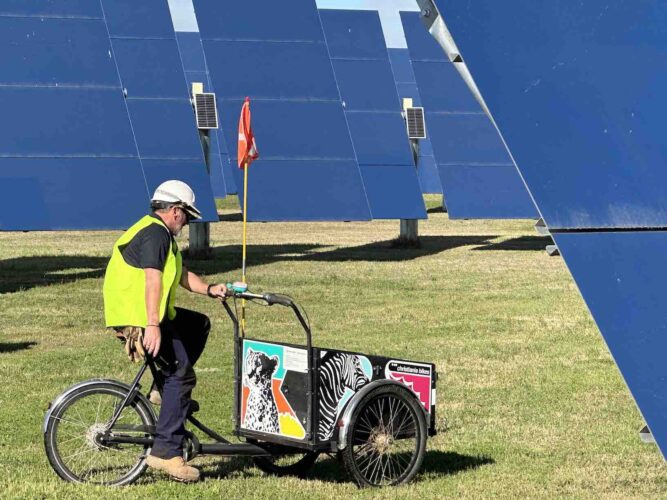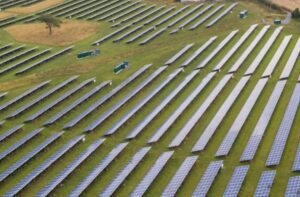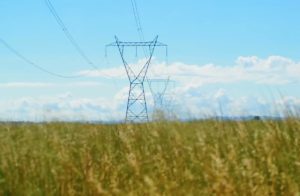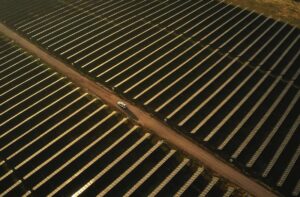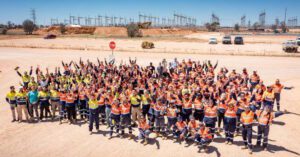It’s a cool and sunny morning out near the small community of Carwarp in western Victoria, and RayGen CEO Richard Payne is pleased. But he’s got a nervous eye on the clouds rolling in from the west.
The four solar towers and their attendant rows of heliostats (giant mirrors) look stunning in the morning sun, and Payne wants that to be the case when the deputy energy minister Jenny McAllister and other dignitaries arrive in a few hours to cut the ribbon and declare one of Australia’s most innovative renewable projects open.
It’s not that Payne is worried about the old hoary chestnut of “when the sun don’t shine”, his concern today is about getting the right “photo-op”.
The real beauty of this Carwarp solar project is that RayGen needn’t be bothered by intermittent cloud cover because it claims to have solved one of the big challenges of concentrated solar projects, or any renewable project for that matter – how to deliver cheap and efficient deep storage.
It’s been a long journey since RayGen founder John Lasich first began working on his unique concentrated solar PV technology decades ago. Now, In a module the size of the palm of your hand, it holds as much capacity (2.5kW) as many of the conventional PV modules mounted on the rooftops of Australian homes.
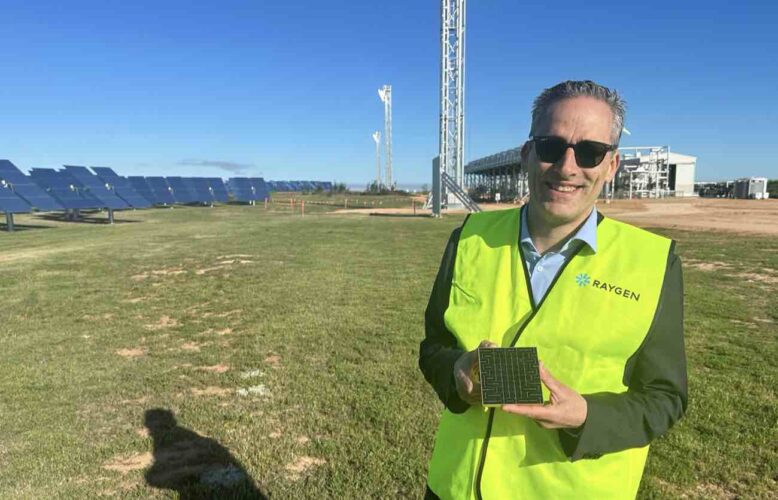
But how to deliver this power at competitive prices has been the challenge. RayGen experimented by mounting the modules in giant dishes, before putting on the top of solar tower, with rows and rows of heliostats (effectively big mirrors) that track and reflect the sunlight on to the receiver.
Simple solution for storage
Like other concentrated solar technologies, it was marginalised by the sheer scale and low cost production of conventional solar PV. Indeed, it wasn’t until 2019, when RayGen latched on to a deceptively simple solution to take advantage of the heat generated by the receivers that the path to commercialisation opened up.
The history of solar thermal and concentrated solar PV has been a mix of huge promise and deep disappointment – the massive SolarReserve project in South Australia being a prime example – but RayGen may succeed where others have failed because it has kept everything as simple as it can.
For a start it has gone for modularity, and deploys 1MW units rather than vast 100MW arrays. That means that instead of using towers that are 200 metres high, it uses towers that are 45 metres high, and each 1MW unit needs fewer and smaller heliostats than conventional “tower power”.
These require smaller footings and, in RayGen’s case, no cables as each heliostat has its own (solar powered) controls that automatically follow the sun.
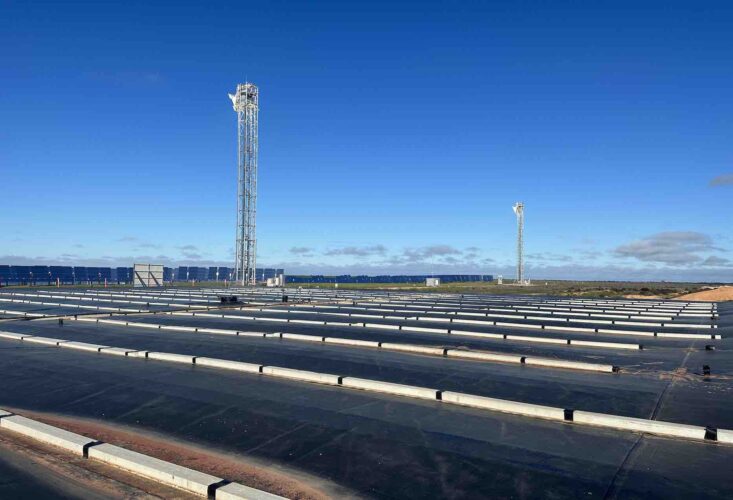
The storage is also deceptively simple. Instead of using fluids such as molten salt with temperatures of 600°C or more, RayGen has borrowed from conventional district heating and geothermal technologies, and uses hot and cold ponds, low temperatures (90°C) and Organic Rankin Cycle engines, which have been around for years.
A thousand suns
Payne says the modules operate best at concentrated light up to 1000 times the concentration of a single sun. The question was what to do with the excess heat.
“That module of 10 centimetres by 10 centimetres is generating two and a half kilowatts of electricity, and five kilowatts of thermal energy, which is incredible. So that beam of light is strong enough to melt steel.
“So during the middle of the day, as we’re generating this heat, we’re now sending it through a buried pipe into what we call a thermal energy store.
“And this is a large excavated dam, which is lined with a polymer. It’s insulated, and it’s covered. So there’s no water loss. And it’s very efficient in retaining heat.
“So it’s actually taken from the district heating technology from Northern Europe where they collect solar hot water in the summer. And they dispatch it through the district heating network in the winter. And so we’ve leveraged up that technology.
“So we store this thermal energy, this 90°C water in this hot pit. And then we use that to run an Organic Rankine cycle turbine, which is pretty conventional technology. And that thermal energy is then converted back into electricity. So when the sun is set, we then use that heat to generate electricity.”
Conventional technologies
So, how efficient is it?
“The beauty of this technology is that on the storage side in particular, we’ve really bring together off the shelf components, organic Rankine cycle turbines, chiller systems and the pit thermal energy store,” Payne says.
“It’s a unique integration of those components and it’s driving a very low cost storage solution. And of course, all the engineers out there will be will be thinking, the 90°C temperature difference, which is driving the ORC is a very low in terms of thermal efficiency.
“And they’re right, it is a low in thermal efficiency. But it’s very high in electrical efficiency. Because we’ve only used electricity to create the cold energy. We have used no electricity to generate the thermal energy.
“And so when we talk about round trip efficiency of our system, we talk about putting a megawatt into the chiller, and then the ORC will dispatch 0.7 megawatts to the grid. And this is a 70% range of efficiency, which is equivalent to pumped hydro.”
The technology has impressed some pretty big players in the industry. The Australian Renewable Energy Agency is a long term believer in this home-grown technology, and has so far provided $38 million in five different funding rounds over the last decade.
RayGen’s shareholder list now includes oil giant Chevron, the global engineering and industrial services conglomerate Schlumberger (now SLB), and the Norwegian oil giant Equinor, along with Australian utility AGL.
“A very beautiful project”
The Carwarp facility is rated at 4MW and 51MWh, with a 3MW connection to the grid, and the company says it is big enough to prove that the technology works, and can deliver at scale.
We’re accelerating down the cost curve and we’re on track to deliver the lowest cost firming and dispatchable renewable energy to the market,” Payne says.
Markus Brokhof, the chief operating officer of AGL, describes it as a “very beautiful project”, and says that RayGen’s technology is essential to deal with the phenomenon of “dunkelflaute” – the German description for long wind and solar droughts.
So impressed is AGL with the technology that it is now an investor, and intends to roll out the technology at the site of the shuttered Liddell coal fired generator in the Hunter Valley. The initial idea is to have 50 of these 1MW towers and their attendant arrays positioned on the massive ash dam.
Another shareholder is Photon Energy, which invested early in the piece and now intends to lead the development of the first truly commercial scale project – 200MW and more than 1,100GWh of storage at a site near on the Eyre Peninsula in South Australia.
Gartner says the project – located on dry, flat, marginal grazing land – will be split into blocks of around 30MW each, with 30 towers and their attendant heliostats, that will share hot and cold water storage. can alleviate grid constraints.
“The great thing about this storage system is that it looks like we’re going to be well below where the current energy market prices are for producing dispatchable energy,” Photon managing director Michael Gartner says.
“That’s been the challenge at the moment because solar is extraordinarily cheap, wind is very cheap, but we have these we have these dark and calm periods and you need to fill those gaps, and this will be lowest cost earned and dispatchable renewable energy in the market.”
Biggest solar manufacturing facility
ARENA has pitched in another $10 million to help RayGen advance the engineering for that South Australian site, and also to help it ramp up production at its Melbourne manufacturing facility, which has a capacity of 170MW of the high efficiency modules a year. That makes it the country’s biggest solar manufacturing facility.
“This is an innovation story that we ought to be proud of,” ARENA CEO Darren Miller said at the launch.
“We are at basecamp in getting to net zero … it’s ambitious but achievable but it’s going to require unprecedented collaboration between government and the private sector to bring it about.”
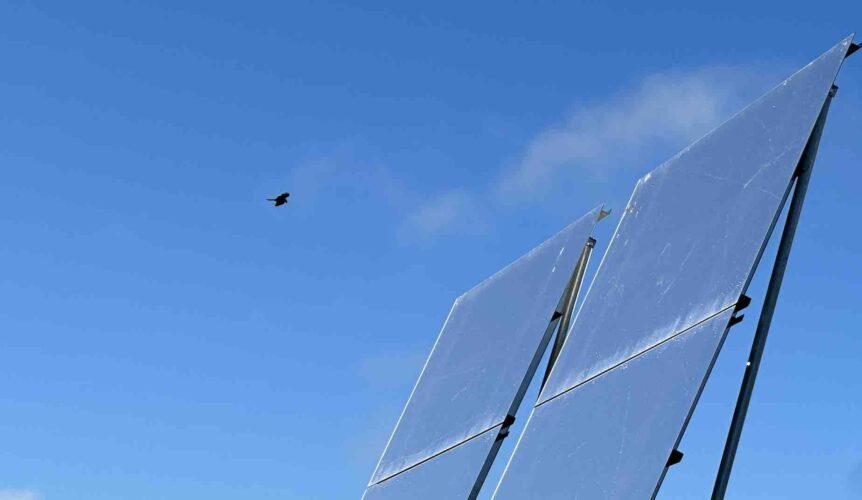
And, for the solar skeptics out there, this technology is no “bird frier” – the accusation hurled at bigger solar thermal projects in the US in recent years. And, as we walk through the solar field, a black kite plays with the thermals rising from the mirrors.
“We’ve had zero problems with that,” Payne says. “And I’m very conscious of that, because I happen to be a Twitcher (bird enthusiast) for last 25 years, so I am very keen on the bird watching.
“Since 2014, we’ve been operating plants in Bendigo, and had zero bird incidents and the same here since the last year when we started exporting PV.”
Lasich, who remains chief technology officer, is particularly proud, having developed what he says are the best solar cells in the world and now married it with an elegantly simple solution.
“We’ve kept the degree of difficulty low. It is complex, but by keeping high temperatures out of the system has made everything a lot easier and cheaper,” he told RenewEconomy.
“Is is our first outing at this scale. So we think we can get cost down a lot from here as well and a lot of things naturally scale well. If you make bigger turbines, the performance increases so there’s a lot of natural ailable gains gains you can get just by going bigger.”
You can listen to an interview with Richard Payne and a tour around the Carwarp site in the latest episode of the Solar Insiders podcast.


